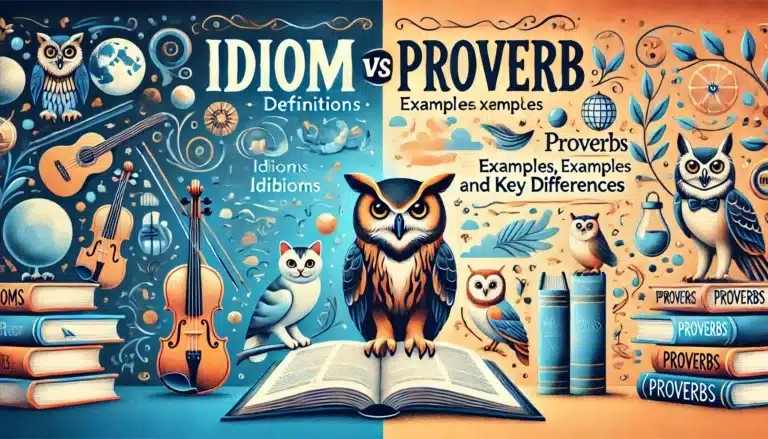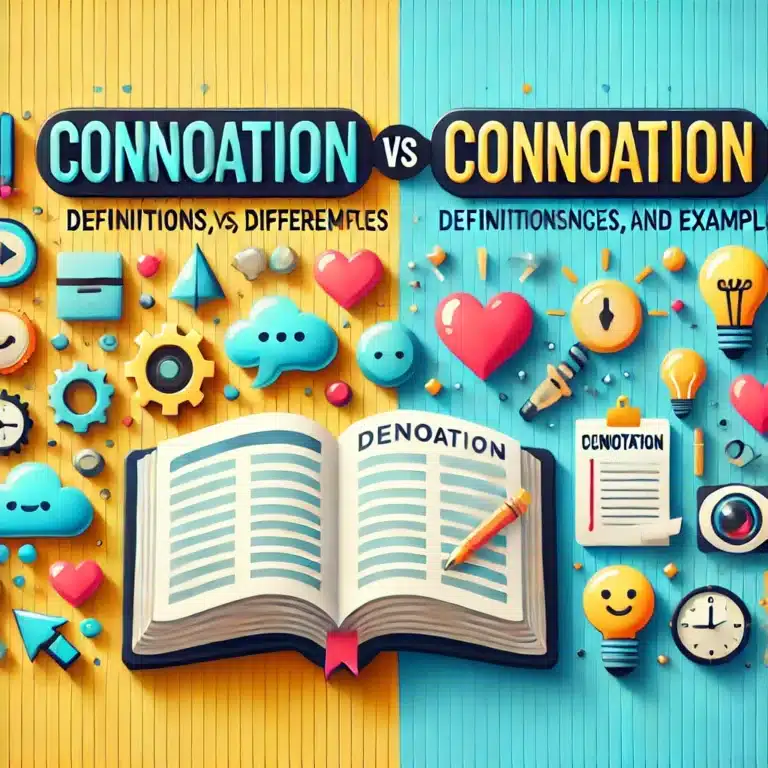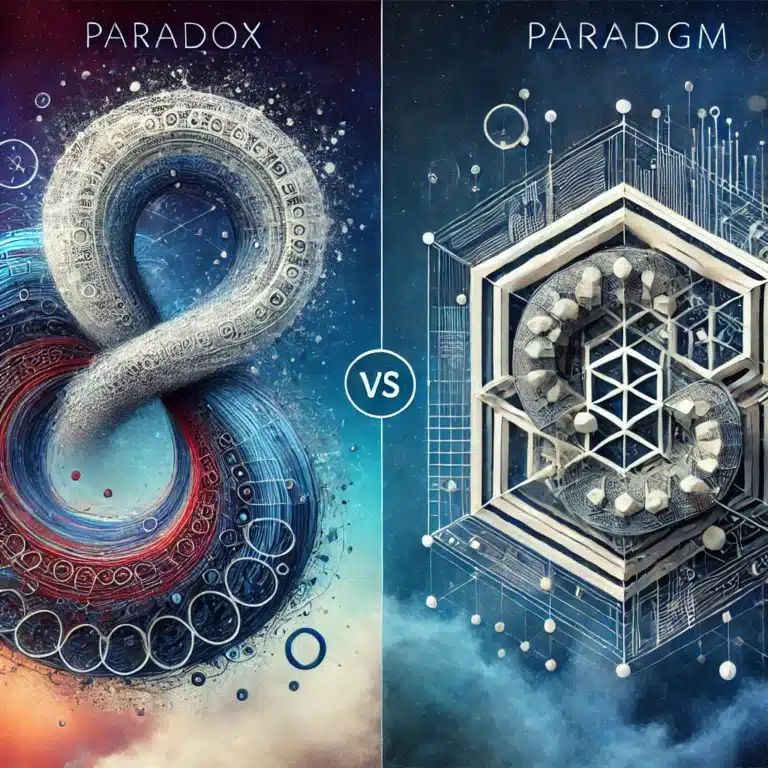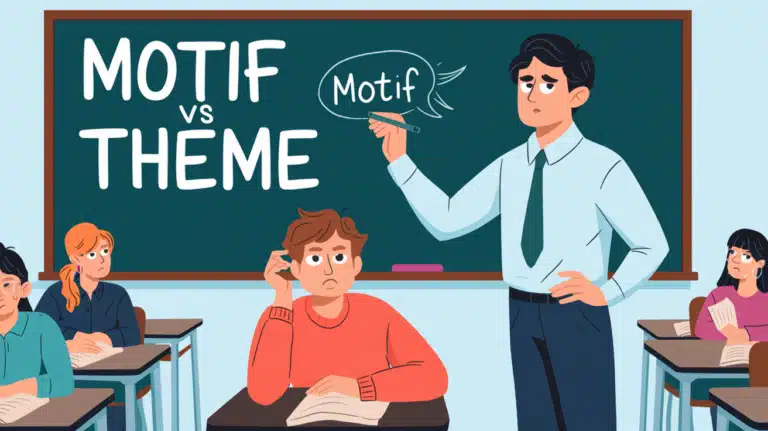Metaphor vs Analogy: What’s the Difference?
In English, metaphors and analogies are both tools used to explain concepts by comparison, but they have distinct roles in writing and communication. A metaphor directly compares two things by stating one is the other, creating vivid, imaginative descriptions. For example, saying “Time is a thief” suggests time steals moments away, emphasizing its fleeting nature. Metaphors work best when a direct, creative connection helps the reader quickly understand a concept.
An analogy, on the other hand, breaks down the comparison in a more structured way, often explaining the how or why of a similarity. Analogies can span sentences or even paragraphs, providing a step-by-step explanation to bridge the gap between a familiar concept and a new or complex one. For instance, comparing the brain to a computer helps explain functions like memory and processing power, as people can relate to how computers operate. Analogies are ideal for detailed explanations that enhance understanding through logical comparison.
Key Differences Between Metaphor and Analogy
| Feature | Metaphor | Analogy |
|---|---|---|
| Definition | Directly states one thing is another | Compares two things to explain a concept in detail |
| Purpose | Creates vivid, imaginative descriptions | Enhances understanding through structured explanation |
| Example | “Life is a rollercoaster.” | “The brain is like a computer: it stores and processes information.” |
Both metaphors and analogies add depth and clarity to writing, each suited for different contexts—metaphors for artistic expression, and analogies for logical, in-depth explanation.
Metaphor
A metaphor is a powerful figure of speech used in English to describe one thing by directly comparing it to another, unrelated thing, without using the words “like” or “as.” This comparison isn’t literal; instead, it helps readers visualize or understand an idea by connecting it to something familiar. For example, saying “Her smile was sunshine” suggests her smile is warm and bright, bringing positivity just like the sun.
Metaphors add richness and depth to writing, often evoking emotions and imagery that make descriptions more engaging. They are frequently used in poetry, literature, and everyday language to make complex ideas easier to grasp. For instance, “Time is a thief” doesn’t mean time literally steals, but it emphasizes how quickly it takes moments away. In this way, metaphors are a tool for creating vivid imagery and emotional resonance, helping readers to feel rather than just understand.
Here are a few common metaphors you may have heard:
- “The world is a stage.” (Life has different roles, like a theater.)
- “He has a heart of stone.” (He is unemotional or unkind.)
- “Time is money.” (Time is valuable and shouldn’t be wasted.)
Using metaphors thoughtfully can make writing more engaging, giving ideas a fresh perspective and bringing abstract concepts to life.
Read More About : Analogy vs Simile: Don’t Be Confused by These Comparisons
Analogy
An analogy compares two things, often for explanation or clarification. Unlike a metaphor, which directly equates two things, an analogy explains how they are similar in a specific way. This makes analogies especially useful for explaining complex ideas by connecting them to something familiar. For instance, describing the internet as a “highway for information” suggests that, like cars traveling on roads, information flows along pathways to reach destinations.
Analogies are common in teaching and writing because they bridge the gap between known and unknown concepts. They allow readers to grasp new information by linking it to something they already understand. For example, saying “the brain works like a computer” doesn’t mean our brains are machines, but it suggests that both process and store information.
Here are a few everyday analogies:
- “Finding a needle in a haystack.” (Something that’s hard to locate in a large, cluttered area.)
- “Life is like a box of chocolates.” (Life brings unexpected surprises, just like each unwrapped chocolate.)
- “Learning a new language is like unlocking a new world.” (It opens doors to new experiences and cultures.)
Analogies are excellent tools for clear communication, helping ideas feel relatable and easy to understand.
Read More About : Metonymy vs Synecdoche: What’s the Difference?
Metaphor vs. Analogy: The Differences
Focus:
Metaphors and analogies help clarify ideas, but they focus on slightly different approaches. A metaphor directly states that one thing is another, creating a vivid image by equating two different things to emphasize shared qualities. For example, “Time is a thief” suggests time can “steal” moments from us, even though time isn’t a literal thief.
An analogy, on the other hand, compares two things in a more detailed way, focusing on their shared structure or function to explain a complex idea. Unlike metaphors, analogies often provide a step-by-step comparison. For instance, explaining the brain as “like a computer” suggests that both systems store and process information in similar ways, giving us a more in-depth understanding of the brain’s function.
Structure:
Metaphors are brief and often implicit, capturing attention by drawing an unexpected parallel between two things. They rely on creativity and imagination to convey meaning quickly. In contrast, analogies are more structured and often longer. They connect two things point by point, laying out specific similarities to clarify how they are alike. This structure is particularly helpful in teaching and explaining complex topics.
For example:
- Metaphor: “The world is a stage.”
- Analogy: “Life is like a play, with people entering and exiting, each with a unique role to play.”
In a Nutshell:
The main difference between metaphors and analogies is that metaphors create an immediate connection to highlight quality, while analogies break down similarities to explain or clarify a concept. Metaphors make statements; analogies build bridges for understanding.
Using Metaphor and Analogy in Writing and Communication
Identify Your Goal:
Before diving into metaphors and analogies, it’s crucial to understand what you want to achieve. Are you trying to make a complex idea simpler, add depth to a description, or spark emotion? If your goal is to clarify, an analogy might work best, breaking down similarities step-by-step. If you want to create an image or add flair, a metaphor can deliver that punch in just a few words.
Choose Your Source Material:
The most effective comparisons come from familiar ideas. To help your readers connect, select things they can easily relate to. If you’re describing teamwork, you might compare it to a symphony where every instrument has a unique role. Your comparison works best when it’s relatable, helping readers see connections instantly.
Ensure the Comparison Makes Sense:
Not every comparison works; it should feel natural and make sense to the reader. Stretching too far or using an obscure comparison can confuse rather than clarify. If you’re comparing memory to a filing cabinet, the concept should align (e.g., files representing memories). Test your comparison to ensure it’s easy to grasp.
Keep it Fresh (but Not Forced):
Avoid clichés. Phrases like “busy as a bee” or “time flies” are well-worn and can feel stale. Instead, aim for fresh comparisons that keep readers engaged and surprised, but don’t overdo it. A unique metaphor or analogy can capture attention, but if it feels out of place, it may distract rather than add value.
Consider the Context:
Context matters in making your comparisons feel appropriate. For example, using a sports analogy might work well in a casual setting, but it may not fit a formal business proposal. Make sure your language aligns with the tone of your message and your audience’s background.
Origins of Metaphor and Analogy
Metaphor:
The word “metaphor” originates from the Greek word metaphora, meaning “to transfer.” Metaphors transfer qualities from one thing to another by directly stating that one is the other, like saying, “The sun is a golden coin in the sky.” This technique has been used for centuries to make writing more vivid and to express ideas with emotional impact.
Analogy:
“Analogy” comes from the Greek word analogía, meaning “proportion” or “correspondence.” Analogies are structured comparisons used to explain something unfamiliar by showing its resemblance to something known, often providing logical connections between ideas. For instance, explaining electric circuits by comparing them to water flowing through pipes helps clarify how electricity moves and flows.
Using metaphor and analogy wisely can enhance communication, making your message memorable, relatable, and easy to understand.
Examples in Context
Metaphor:
Metaphors create vivid images by directly equating two different things. Here are a few examples:
- “The world is a stage, and we are merely players.” This metaphor from Shakespeare compares life to a stage, suggesting that people take on different roles in various situations, like actors in a play.
- “Time is a thief.” Here, time is portrayed as a thief, capturing the idea that moments pass quickly, sometimes stealing experiences before we realize it.
- “She has a heart of stone.” This metaphor suggests a person’s cold, unfeeling nature by comparing their heart to something hard and unyielding, like stone.
Metaphors are powerful because they give immediate insight into the nature of an idea, person, or object without lengthy explanations. With just a few words, they evoke emotion and add depth to descriptions.
Analogy:
Analogies provide step-by-step comparisons, often clarifying complex ideas by breaking them down. Here’s how analogies work in context:
- “Finding a good friend is like finding a needle in a haystack.” This analogy explains the rarity and challenge of finding a true friend by comparing it to the nearly impossible task of locating a tiny needle within a large pile of hay.
- “A teacher is like a gardener, nurturing each student to grow and flourish.” This analogy suggests that teachers provide care and guidance to help students reach their potential, much like gardeners tending to plants.
- “The human brain works like a computer, processing information and storing memories.” By comparing the brain to a computer, this analogy makes it easier to understand how our minds process and retain information.
Analogies are particularly helpful in explaining unfamiliar ideas by relating them to something known, making complex concepts accessible and understandable.
Conclusion:
Both metaphors and analogies bring power and clarity to communication. Metaphors add depth and emotion by connecting ideas directly, while analogies break down complex concepts by comparing them in steps. Understanding when to use each can improve both writing and speaking, making ideas easier to grasp and more memorable. Whether you want to inspire emotion or clarify a point, these tools help bring words to life. Mastering them can make your communication more vivid, engaging, and effective.







